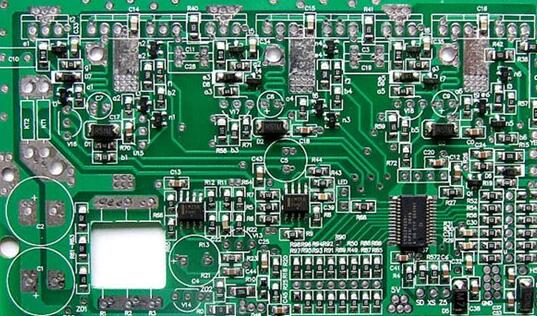What is PCBA?
PCB (Printed Circuit Board), the Chinese name is printed circuit board, also known as printed circuit board, is an important electronic component, a support for electronic components, and a carrier for electrical connection of electronic components. Because it is made by electronic printing, it is called a "printed" circuit board.
Before the advent of the PCB, the interconnection between electronic components was done directly by wires. Nowadays, wires are only used in laboratories for test applications; printed circuit boards have definitely occupied a position of absolute control in the electronics industry.
PCB production process:
Contact the manufacturer - cutting - drilling - copper sinking - pattern transfer - pattern plating - film removal - etching - green oil - characters - gold-plated fingers - forming - testing - final inspection
PCB unique advantages: high density, high reliability, designability, manufacturability, testability, assemblability, and maintainability.
How did PCBA evolve?

PCBA is the abbreviation of Printed Circuit Board + Assembly in English, which means that the empty PCB board passes through the SMT assembly or the entire manufacturing process of the DIP plug-in, referred to as PCBA.
SMT and DIP are both ways to integrate parts on the PCB. The main difference is that SMT does not need to drill holes on the PCB. In DIP, the PIN pins of the parts need to be inserted into the holes that have been drilled.
SMT (Surface Mounted Technology) surface mount technology mainly uses mounters to mount some tiny parts on the PCB. The production process is:PCB board positioning, solder paste printing, mounter mounting, and reflow Furnace and finished inspection. SMT is very sensitive to positioning and the size of parts during integration. In addition, the quality of solder paste and printing quality also play a key role.
DIP stands for "plug-in", that is, inserting parts on the PCB board. Because the parts are large in size and not suitable for placement or the manufacturer's production process cannot use SMT technology, the parts are integrated in the form of plug-ins. At present, there are two implementation methods of manual plug-in and robot plug-in in the industry. The main production process is: sticking adhesive (to prevent tin plating to the place where it should not be), plug-in, inspection, wave soldering, and brushing (removing in the furnace Stains left in the process) and made inspection.
At present, the country has higher and higher requirements for environmental protection and greater efforts in link governance. This is a challenge but also an opportunity for PCB factories. If PCB factories are determined to solve the problem of environmental pollution, then FPC flexible circuit board products can be at the forefront of the market, and PCB factories can get opportunities for further development.